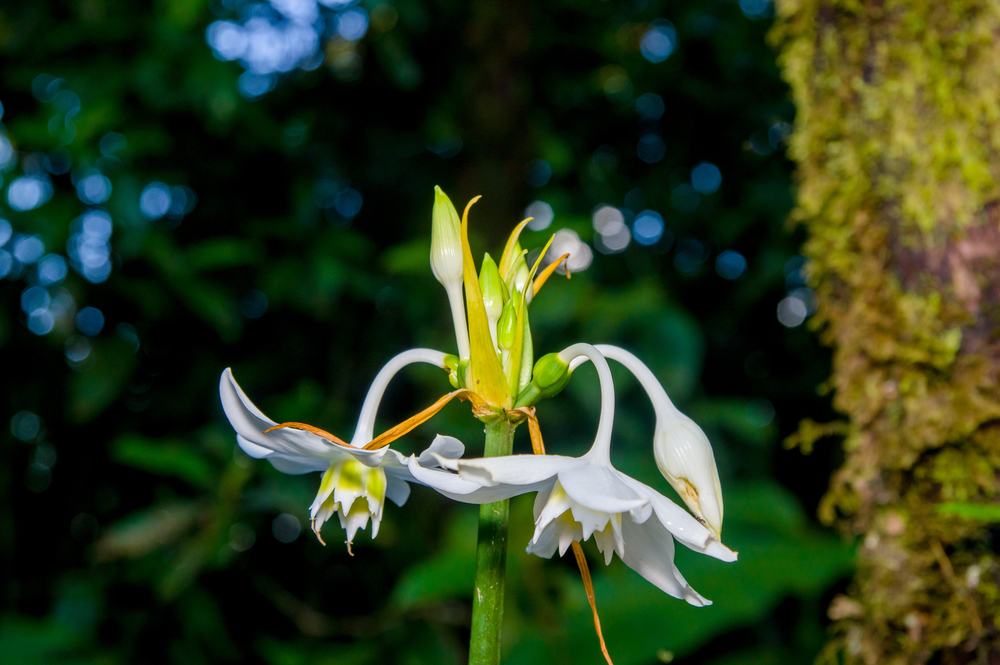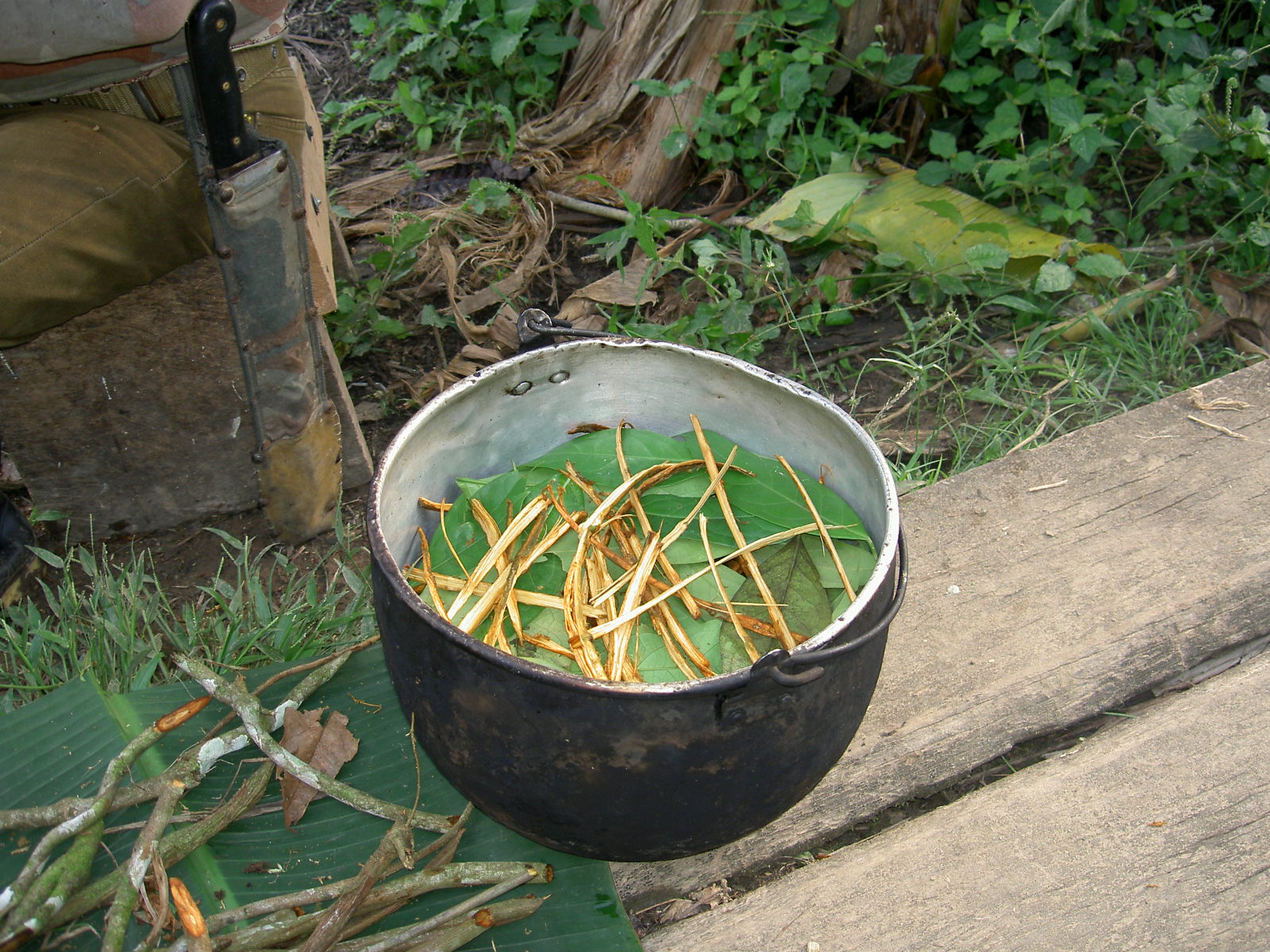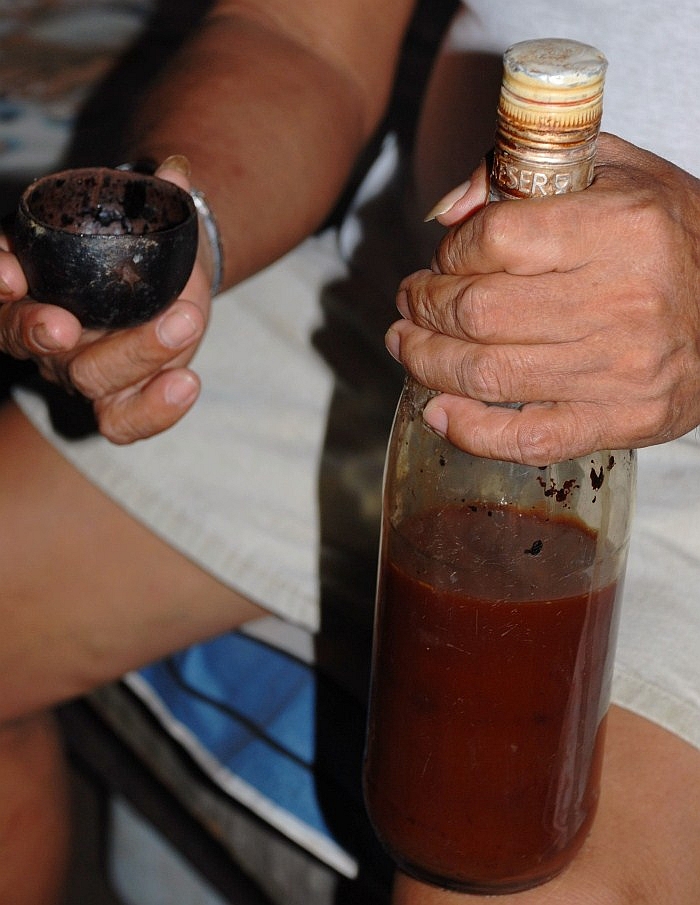Ayahuasca: Psychedelic Tea from the Amazon

Ayahuasca is an herbal drink made from plants that grow in the Amazon jungle. For centuries, this tea has been used in healing ceremonies. The drink causes hallucinations and is said to have spiritual and therapeutic benefits. In recent years, it has attracted the attention of Western medicine as a possible treatment for depression.
The drug has also become popular with people seeking a "shaman experience." According to the journal Nature, a booming industry has developed in South America, as thousands of people pay big money to attend retreats so they can sample ayahuasca's "intense psychedelic insights." However, the drink has also been linked to several deaths among "ayahuasca tourists."
People must travel to take part in an ayahuasca ceremony because the drink is illegal in the United States. Some believe that while they are high on ayahuasca they gain a better sense of self or are better equipped to work through mental trauma, leading to better mental health after the session.
How ayahuasca is made
The recipe for ayahuasca — also spelled iowaska or hoasca, and also called daime, yajé, yagé, natema and vegetal — differs by region, according to a 2003 paper in the Journal of Pharmacology. In Brazil, Peru and Ecuador pounded stems of a flowering vine (Banisteriopsis caapi) are used to make the teas, either alone or combined with the leaves of a shrub (Psychotria viridis). In Ecuador and Colombia, the stems of B. caapi are combined with a different shrub (Diplopterys cabrerana).

Spiritual & medicinal uses
The tea is prepared by an ayahuasquero, who is typically trained in the traditional ways of preparing the tea. The ayahuasquero prepares and serves the tea during a ceremony that usually takes place in a shaman's hut. Those partaking in the tea lie on grass mats or mattresses while riding out the high, which can last for hours.
The ayahuasca tea is used to bring on a "mental awakening." In a 2014 article for Live Science, contributor Benjamin Radford cited a passage from the book "Magic and Witchcraft: From Shamanism to the Technopagans" (Thames and Hudson, 2003). Author Nevill Drury, an anthropologist, wrote, "… in the upper Amazon basin (Colombia, Peru and Ecuador) shamans make extensive use of ayahuasca. … Taking this sacrament allows the shaman to enter the supernatural realm, to have initiatory visions, and to make contact with ancestors and helper-spirits."
Writer William Burroughs wrote about drinking ayahuasca in his book, "The Yage Letters," in which he wrote to poet Allen Ginsberg of his experiences. Burroughs wrote that he at first thought he had been poisoned, and that he felt himself turning into a half-man-half-woman. He praised the tea for its ability to facilitate "space time travel," according to an article in Scientific American.
Effects & side effects
While Western medicine has known about ayahuasca for around 100 years, little is known about how it works, according to an article in the Journal of Ethnopharmacology. While there is a lot of anecdotal evidence that ayahuasca can help with depression and mental trauma, most studies on the subject have been pilot studies or used very few test subjects.
Ayahuasca contains Dimethyltryptamine (DMT or N,N-DMT), which is a psychedelic compound that causes intense hallucinations. It is found in many plants, and it is also the only psychedelic known to occur naturally in the human body, according to the Scientific American article. Julius Axelrod, a researcher at the National Institutes of Health, discovered DMT in human brain tissue, which led to speculation that the compound played a role in psychosis. Further research was abandoned, however.
In 1990, Richard Strassman, a psychiatrist at the University of Mexico, got permission from the U.S. government to inject DMT into human volunteers. His study, from 1990 to 1995, involved 60 subjects who received DMT injections over 400 sessions. Most subjects said they sensed the presence of a powerful, god-like being or that they dissolved into a radiant light, according to the Scientific American article.
However, about 25 subjects saw images of alien robots, insects or reptiles, and after the "trip" could not be convinced that they were hallucinations. These adverse effects led Strassman to discontinue his research. He wrote about the experience in his book, "DMT: The Spirit Molecule" (Park Street Press, 2001).
The physical effects of drinking ayahuasca include vomiting, diarrhea, elevated blood pressure, elevated heart rate, higher rectal temperature and dilation of the pupils. It can also elevate blood concentrations of naturally occurring pain relievers, such as beta-endorphin, corticotropin, cortisol and prolactin, and also increase growth hormone levels, according to a study by the University of New Mexico. In this study, researchers found that DMT can be administered safely to experienced hallucinogen users. However, though this was a double-blind, saline placebo-controlled and randomized design test, there were only 11 test subjects.
In another small study, at the University of Sao Paulo, Brazil, researchers gave a mild dose of ayahuasca to six volunteers in an inpatient psychiatric unit and found that it did help the subjects with their depression.
Another study, also by University of Sao Paulo researchers, was a bit more substantial, but not by much. The test included 17 psychiatric patients. Out of those 17, six found that their depression symptoms were helped by the use of ayahuasca. Also, 47 percent of the patients vomited during the test.

Bad trips & death
There is a dark side of drinking ayahuasca. Though not common, some "ayahuasca tourists" have died, and many Westerners have reported being molested and raped, according to an article in Men's Journal. The tourist boom has given rise to charlatans and fake shamans.
A French woman died in 2011 after drinking ayahuasca, but it was reported that she had a pre-existing heart condition. Another Frenchman died a few months later, probably due to interactions with other medications.
In 2012, Kyle Nolan, a California teenager, disappeared during a retreat to a Peruvian shamanic center. A shaman later confessed that Nolan died from exceeding the dosage of ayahuasca, and that he had buried Nolan's body in the jungle, according to the Daily Mail.
In 2014, Henry Miller, a British backpacker traveling in Colombia, died after a "shaman experience." His death apparently was caused by an allergic reaction to the drink. He became sick during the event and was left to die by the side of a dirt road, according to the Guardian.
Few experts blame the concoction itself, and the reports from the above-mentioned deaths bears out that assertion. Alan Shoemaker, who organizes shamanist conferences, told Men's Journal, "Ayahuasca is one of the sacred power plants and is completely nonaddictive, has been used for literally thousands of years for healing and divination purposes ... and dying from overdose is virtually impossible."
The science is still out on how ayahuasca affects the mental and physical health of ayahuasca users. A review of literature in the journal Drug Testing and Analysis concluded that "accumulated data suggest that ayahuasca use is safe and may even be, under certain conditions, beneficial. However, methodological bias of the reviewed studies might have contributed to the preponderance of beneficial effects and to the few adverse effects reported. The data up to now do not appear to allow for definitive conclusions to be drawn on the effects of ayahuasca use on mental and physical health, but some studies point in the direction of beneficial effects. Additional studies are suggested to provide further clarification."
For anyone seeking an ayahuasca experience, the website Ayahuasca Info recommends preparation by reading up on the drug, discussing the topic with experienced drinkers and only taking ayahuasca in the presence of an experienced drinker who can provide guidance during the session.
Additional reporting by Reference Editor Tim Sharp.
Additional resources
Sign up for the Live Science daily newsletter now
Get the world’s most fascinating discoveries delivered straight to your inbox.











